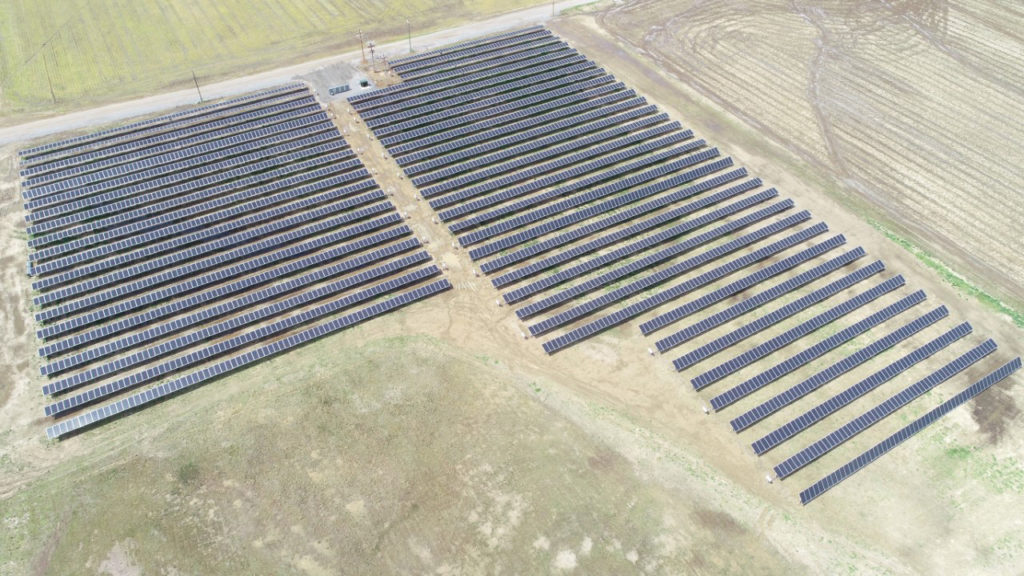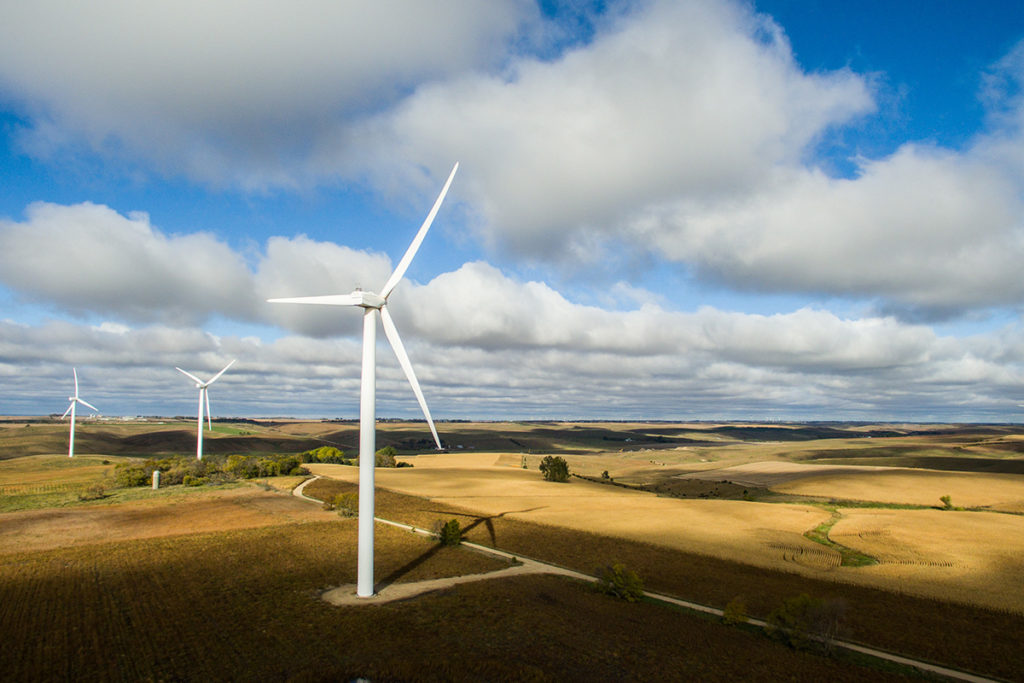
Electric cooperatives are finding ways to quickly develop new sources of renewable energy to help meet member demand for reliable, affordable power.
Distribution co-ops in Kansas are adding more than 20 megawatts of solar power over the next two years through power purchase agreements with a co-op-owned solar developer based in Arkansas, and Minnesota’s Great River Energy has announced a 200 MW agreement with a wind developer.
A dozen Kansas co-ops issued a joint request for bids for development of up to 5% of peaking renewable capacity under the Kansas Cooperative Sun Power Program. The co-ops’ wholesale power supplier recently revised its contracts to allow co-ops to meet up to 15% of their peaking demand with owned or contracted renewable capacity.
The Kansas group accepted proposals from North Little Rock-based Today’s Power Inc. to build, maintain and operate separate projects serving 12 co-ops for a period of 25 years. Construction of the arrays begins in 2021, with all sites expected to be fully operational by late 2022.
“Clean energy will not only reduce our carbon footprint but will help us reach our goal of rate stability by helping the co-op save on the wholesale power bill,” said Steve Foss, CEO of FreeState Electric Cooperative.
The distribution co-op, jointly headquartered in McLouth and Topeka, added a pair of industrial-scale generators at two of its substations in 2018, and co-op management sees the addition of 2 MW of solar capacity as a more economical way of controlling wholesale power costs.
“We look at everything very carefully to determine the feasibly of a project, the investment, and how it will impact our members in a positive way,” said Foss. “This project is about financial savings and rate stability and the solar project will help us achieve that.”
Girard-based Heartland Rural Electric Cooperative is adding 2 MW of solar to help meet member peak demand.
“Everyone in rural Kansas works hard for their money and deserves some of the financial security that these solar projects will provide,” said Heartland CEO Mark Scheibe. “What we do helps feed and fuel America, and this project will help us provide affordable power for our consumer-members.”
Lebo-based 4 Rivers Electric Cooperative is adding two 1-MW solar arrays to serve its 7,000 members. The co-op expects to save money year-round by shaving costs tied to a few hours on the hottest days of the year, because of the influence of peak demand on wholesale rates.
“We have summer peaks, and our highest peak during July and August sets a ratcheted peak for the remaining eight months,” said Dennis Svanes, CEO and general manager of 4 Rivers EC. “A reduction in peak costs translates into lower rates immediately for our members.”
Under the agreements, Today’s Power will monitor production, provide maintenance and upkeep at sites spread across Kansas and guarantee projected output provisions outlined in the contracts.
“For a small co-op like Twin Valley Electric Cooperative, with very few employees, a turnkey agreement is perfect,” said Angie Erickson, CEO of the Altamont-based co-op, which serves about 3,000 meters. She added that the agreement affords the co-op opportunities to provide solar energy to its members without requiring additional training and expertise for its small staff.
Site work is expected to begin within weeks at some locations.
“Engineering and design work are already in progress for these projects,” said Matt Irving, vice president of operations for Today’s Power. “Our technicians can develop and commission a 1-MW solar array within 60 days once land is acquired and prepared and all permits and engineering approvals are in place.”
Today’s Power is a wholly owned subsidiary of Arkansas Electric Cooperatives Inc. Since 2014, the company has built solar arrays for 15 of Arkansas’s electric co-ops and for other co-ops in Oklahoma and Tennessee. Once the Kansas projects are deployed, the company will have more than 70 MW of solar capacity deployed under PPAs in four states.

Meanwhile, Maple Grove, Minnesota-based Great River Energy has signed a PPA for 200 MW of wind energy. The generation and transmission co-op serves 28 distribution co-ops in Minnesota and is committed to meeting 50% of its overall demand with renewable power by 2030.
“Securing beneficial wind energy is a vital component of our power supply strategy,” said Jon Brekke, vice president and chief power supply officer for the G&T. “This project is an important step in our portfolio transition that will benefit our members for decades to come.”
Great River Energy is acquiring the full output from 73 turbines being deployed across South Dakota’s Deuel County by a renewable energy developer. It will begin receiving energy from the Deuel Harvest Wind Farm in 2023.
Derrill Holly is a staff writer at NRECA.